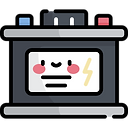
Clover
Clover is a multi-functional tool used for the design of telecommunications networks. It is capable of providing CAD, Mapping, Engineering & Geographic Information System services, for data construction and network mapping documentation. Clover supports end to end network design for overhead and underground networks to commercial and residential addresses.
AGENCY
Rare Form
MY ROLE
Product Designer
YEAR
2022
SECTOR
Telecom
Use Cases
Each design starts by creating use cases. I usually ask the question "What are the users' goals?" And then learn what is the sequence of steps to fulfill that goal. Clover is a large application which can carry out many different tasks. Therefore there were many use cases. Here are examples of assigning an input to a device and performing a trace.

Goal!
Assign an Input to a device.




Locate the device.
Research and view the specs.
Identify the current Inputs/Outputs.
Assign a new Input.

Goal!
Perform a Trace.

Find the location.

Choose a start point.

Choose an end point.

Identify the equipment along the route.
User Journeys
The user journey is more specific to the application. It is a timeline of all the touchpoints between a user and the product. I took a deeper dive into the above use cases and applied them to the navigation and flows within Clover.

Don needs to connect an amplifier to a power supply.
Start search.
Enter keyword and adjust filters.
View results.
Inspect the device.
Select Connection Matrix.
Find available input.
Assign input somewhere.

Kat wants to see how a node housing is connected to the nearest pole.
Find map location.
Zoom in for a better view.
Select the node housing.
Select the pole.
Select trace.
View the chain of devices connected.
Search to Inspect

1
Every task generally begins with a Search. The user must enter a keyword into the Search Bar and choose a proper equipment category from the dropdown menu beneath it.
2
Once they click Search, they can see a list of results which they can choose to inspect further for more detailed information or pan to equipment location on the map.


3
The inspector panel gives more in depth information about the selected equipment.
And gives the user options for additional information and drafting tasks.
Generate Report - A/B Testing
2a
Export to Excel using the operating system tools. Either Windows File Explorer or MacOS Finder would handle the exporting process from the application to another location.
8 out of 12 test subjects preferred having the computer operating system handle exporting rather than the app because it was more familiar.

1
Device and equipment information can be viewed in Trace Details, but there needs to also be a way to upload these details for future viewing outside of the application and for email correspondence.

2b
Export to Excel with tools created within the application.

Site Name Check - User Observations

1a
Legacy design: user clicks Apply after all information is entered before they can view warning or error messages.
Originally in the Detailed View Header Configurations, the user would edit the header and then click apply. After doing all of the data entry, error messages and warnings appear if there are any issues. As a team, we wanted to explore ways of finding out about potential problems beforehand.
2
A Warning message is helpful text for the user about an action that they may have taken.


1b
New proposal: user can check in advance by clicking Site Name Check, to see if there are any conflicts.
The Site Name is the main point of friction when editing the header. We found through interviews that 85% of the time users would enter names which would cause conflicts and bring about warning messages. We decided to add a feature called Site Name Check, a button allowing the user to see if there are any conflicts before completing all of the data entry work. 7 out of 10 test subjects liked this idea. There were some objections that it is different from what they had grown accustomed to, but it is an improvement and would take time to acclimate.
Tradeoff: The Detailed Viewer would have to be be redesigned across the entire application and there would be some additional effort in development too. The improved UX is worth the extra effort and resources.